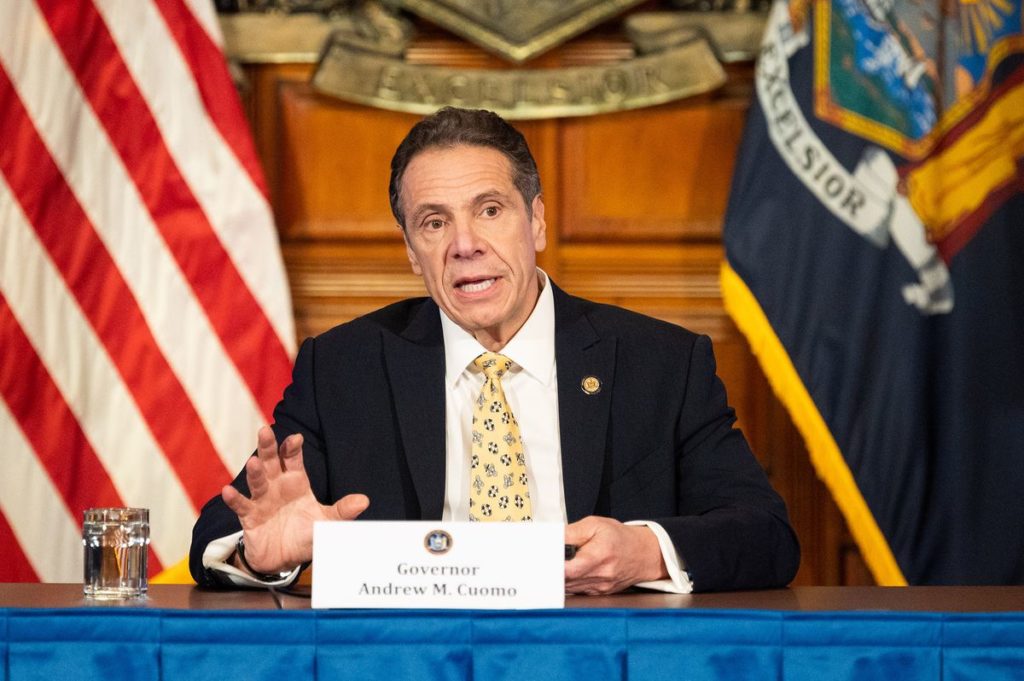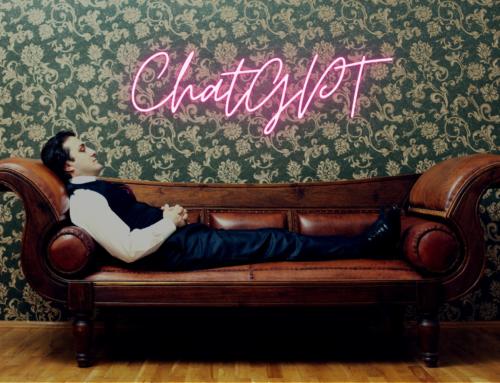I met Governor Andrew Cuomo back in 2001.
He wasn’t Governor yet but was on a Silicon Valley fundraising tour. At the time, he and his wife, Kerry Kennedy, joined me for lunch at my favorite seafood restaurant (Acqua) in San Francisco.
The son of a former governor, he was confident, down to earth, and approachable. I was new to politics, among the youngest donors, and wasn’t sure what it meant to give to a campaign. But, I felt a connection to him and Kerry.
Later, In 2002, I saw him again during a casual dinner event at a New York hotel during his gubernatorial run. I was seated next to him and leaned over to ask him a question.
“Why do you feel you would be great at the job?”
“I ran HUD, [a multi-billion dollar government department] and I feel I could do a great job,” he replied. I felt he really wanted the job and wished him well.
He didn’t get the job.
A gaffe during the campaign cost him the win. On September 11, 2002, he and his wife Kerry would go through a messy divorce.
He receded from the public eye and went into seclusion to lick his wounds.
“Sometimes life brings you to a point where you either give up or push harder and dig deeper to find an unrecognized strength in your character,” explains Governor Cuomo.
Little did he know, this extreme pain and public humiliation would set off a transformation that would prepare him to take on the world’s greatest challenge in a century–the Novel Coronavirus.
Welcome to another installment of the Leadership in Crisis series.
In the summer of 2020, I began a search for stories about leaders who led their organizations–be it companies, states, countries–through a major crisis. In this search, I am looking for lessons from the challenges overcome by some of the world’s greatest leaders.
In the series, I focus on historical pioneers, leaders in technology whom I admire, and those who showed unwavering leadership during the 2020 pandemic.
Among my list of reads was Andrew Cuomo’s American Crisis: Leadership Lessons from the COVID-19 Pandemic.
In the book, Cuomo shares his personal and professional lessons from being at the helm during the 2020 COVID-19 pandemic.
A Governor is in many ways the chief executive officer of a State. He/She presides over an incorporated entity whose customers are the state’s residents and its businesses.
What’s the product? It’s public services that include clean water, public health, infrastructure such as roads, tunnels, and bridges, public housing, parks and recreation, security in its police or national guard, and of course, emergency response.
Its license fees are the various state taxes.
The Governor is chosen by the people he/she serves (not a board of directors), and there are no (demanding) VCs to contend with.
But, in crisis, things are very different.
In my journey as a CEO, I have experienced the challenges that come with: raising capital for a new idea, failed projects, running out of money, employee attrition, threats from competitors, rapid changes in the market, the grip of impostor syndrome, customers firing my company, firing my customers, and the difficulties with creating the right culture.
But, none of that compares to the challenges the Governor of New York faces.
In the past two decades, my home state has experienced significant disasters, including the 9/11 terrorist attack, the 2008 financial crisis, Hurricane Sandy, and the COVID-19 pandemic!
As of this article’s writing, the pandemic was well on its way to taking 2 million lives globally, 2 thousand lives per day (more than 9/11), and New York has entered another surge.
So, when Governor Cuomo–who was the State’s CEO for three of these events–decided to write about his learnings from the pandemic, you can imagine why I had to read it. There is just so much to learn from his experience during this unprecedented time.
While Cuomo makes a strong case in the book for the federal government’s failures during the crisis, I chose not to focus my energy there. Instead, I share the learnings applicable to a CEO of any company undergoing a crisis.
Enjoy.

(image: Bloomberg)
Communication is an Art Form (especially during a Crisis)
In wartime, a company’s communication system must go into hyperdrive.
The CEO needs to get out there and talk.
Not just any talk, I mean no bullsh*t talk.
Governor Cuomo understands this all too well.
His daily briefings became a global phenomenon during the pandemic. Many of my friends and colleagues abroad shared how these no-nonsense presentations were a breath of fresh air when the world was in the dark. When I asked why one person explained the briefings were real and raw.
(Another mentioned how sexy the Governor was delivering these public service messages. I won’t go there!)
As Cuomo explains:
My plan for [the] briefings was simple: We would provide unbiased, factual evidence explaining the virus and its progress. A single day’s briefing means little, but constant reinforcement and updated factual data could present a story that the public could follow.
I presented the facts, including dates and medical information. I didn’t hold back any information because I thought it was too difficult or frightening. It’s not my place to filter or edit the truth. The people of New York are not children, and I am not their father […] People will make the right judgment if they know the facts.
He is right.
As a CEO, it does not serve your organization to speak anything but the unvarnished truth about a crisis. I like to say, “no happy talk.”
But, the COVID-19 pandemic set off something even more dangerous.
Panic.
During the 9/11 crisis, the threat was clear. Bad guys exploited the security systems of airlines and airports. They turned airplanes into missiles and attacked our most cherished cities. The danger was clear. We need to shutdown our airways, care for the dead and wounded, and help their families heal. Then, we needed to go after the bad guys.
Cuomo again:
An airborne virus was one of the nightmare scenarios envisioned as a terrorist plot. It is easy to create chaos and overwhelm society with fear when people are afraid to breathe the air. There would be no good news with [the Coronavirus].
There is no better way to increase your team’s anxiety than to speak to them as if there is no fire when everyone is smelling smoke, and the house is burning down. This kind of talk can lead to panic and poor execution.
Cuomo is no stranger to panic. He witnessed it in the natural disasters he managed while Secretary of HUD and during Hurricane Sandy in New York.
But as he explains, “panic is the real enemy, even more than the initial disaster. Once people are panicked, there is chaos. A natural disaster can be managed; a panicked population cannot.”
His candid approach to the briefings offered the public the vital information they needed to understand the challenges ahead and the sacrifices that they would need to make.
There was no happy way to tell New Yorkers that schools would close, businesses would close, people had to stay home, and that many people would die.
When you are at the helm of a company during a crisis, remember — don’t sugarcoat it.
But, be careful how you say it.
Once, early in the crisis, Cuomo made a mistake. There was a fast-spreading cluster in New Rochelle, New York. He sent the national guard down there to help clean up schools and form what he called a “containment zone.” People were freaking out. It evoked scenes from the movie, Contagion.
When you are the CEO, everyone is hanging on your every word. Your mood sets the tone. While in crisis mode, If you walk the halls saying, “we are f*cked!” Well, that is going to freak people out. If you say we need to slash costs, that is going to freak people out. If you tell a customer you are shutting down their mission-critical application; it will simultaneously elicit fear and anger.
“Communication is an art form, especially when emotion is running high. When I issued our [stay at home] executive order, I would speak about staying at home and pausing,” elucidated Cuomo.
Oh, and say it in your own words.
Don’t let your marketing lead or your head of people write essential communication to your teams. Cuomo drafted and organized every briefing himself. He thought carefully about every piece of information he wanted to convey and how he wanted it done.
Execute with “Constructive Impatience”
The winds of a crisis will hit you with so many decisions it will feel like Hurricane Andrew.
During the pandemic surge, Cuomo had to convince New Yorkers to stay home and, later, wear masks in public spaces. He had to magically grow the number of hospital beds in the state from 53,000 to an estimated 140,000 based on his science advisors’ projections.
Testing was also a challenge. Cuomo had to scale the state’s testing capacity from a standstill to more than 10,000 per day. When he laid out these goals, his people looked at him like he asked for the return of Jesus Christ.
That’s not all.
He had to develop a way to clean the most extensive transit system in the world while keeping it running nearly twenty-four by seven. He had to solve how to get food to thousands of children who relied on school lunches and childcare for the essential workers he was asking to risk their lives every day.
How did he accomplish all of this?
First, he was not afraid to ask dumb questions and get close to the information he needed to make the best decisions.
“Pardon my ignorance, but I don’t know what I’m talking about, and I have to be educated. So excuse me if I ask simple or stupid questions. First question. What is large-scale testing?” Cuomo asked his team as New York’s case count rose exponentially.
He got close to the source of information to understand it best.
For example, to bring himself up to speed on COVID-19, he called on the nation’s top epidemiologists and scientists for a crash course on the virus.
Cuomo puts it bluntly:
There was no blueprint for this undertaking. No governor had faced this challenge. For me, it was about developing a relationship, and a relationship is based on trust, and trust comes from the truth. If they did not trust my credibility, they would not trust me, the information I gave them, or my proposals[…] I would not be effective in communicating the facts of COVID if I didn’t understand them; I didn’t know if I could learn them quickly enough.
Second, he has a passion for getting things done. He can be obsessive about it.
His approach to execution is what he calls “Constructive Impatience.”
He takes an aggressive posture in identifying problems and resolving them. During the pandemic, he encouraged his team to go beyond the impossible and think outside the proverbial box. But, more importantly, he did what leaders must do well–removed obstacles from his team. He calls it “peeling the onion.”
Third, he is a master at leveraging his relationships.
To develop a plan to increase the number of hospital beds by 50%, he called on some of the state’s major hospitals. He helped them understand the drastic measures that would be needed. His relationships with many of these hospital leaders allowed them to set aside their significant financial concerns and agree to work together. Once he developed an approach with the big hospitals, the other regional hospitals came along.
Be Vulnerable and Resolve the Anxiety
They always say that to build trust; you have to take the first step. For leaders, the subject of vulnerability is sacrilege. Many CEOs believe that showing any vulnerability is a sign of weakness. They believe in strict stoicism.
But, the stoics were not about an absence of emotions. They believed that emotions should not dominate you. They are information, and they should be shared with others allowing for a genuine connection between people.
During the pandemic, I was going through a lot, personally. But, I didn’t hide it from my team. I shared everything I was feeling with them every day—the key ingredient of a strong, magnetic team is trust.
Cuomo understands this well. Leaders are people too.
After what I went through [divorce and election loss], I became more emotionally expressive. I wanted to fully communicate how I felt and understood the feelings of others[… ] If I didn’t connect emotionally with the people [of New York], they would never have the trust and confidence in me to follow my proposals. To believe in me, they had to know me as a person and not as a government official. In the briefings, I spoke the way I would speak to a close friend or to my daughters[… ] I learned vulnerability is always worth the risk because, without it, there’s nothing. I learned that in the right circumstances, people can reach a higher level of trust and goodness. Sometimes it takes the other person to go first. So, [I went first].
Remember, our teams are always looking at us.
They take their directions from how we live through a crisis.
Summary
We never plan for a crisis.
When we are in the midst of one, it feels like an endless mountain to climb.
As a CEO, our job is to rise to the challenge. We may not know how we will do it at the time, but we should consider it a gift every time we get the opportunity.
Overcoming the impossible transforms us, and we reach a new level of growth as a leader. We can’t master the role without fighting these forest fires, hurricanes of the century, and even once-in-a-hundred-years pandemics.
And we will make mistakes.
We will fumble–unconscious of intentional error.
But, we can draw from the plays of leaders like Cuomo and Churchill, who came before for the strength and motivation to make it through a year like 2020.
As Cuomo shared in his final address, “We had been up the mountain, traversed the plateau, and survived the slow decline. We had gone through hell, and we were on the other side.”
With the help of New Yorkers and others around the world, he and his team had done the impossible.



